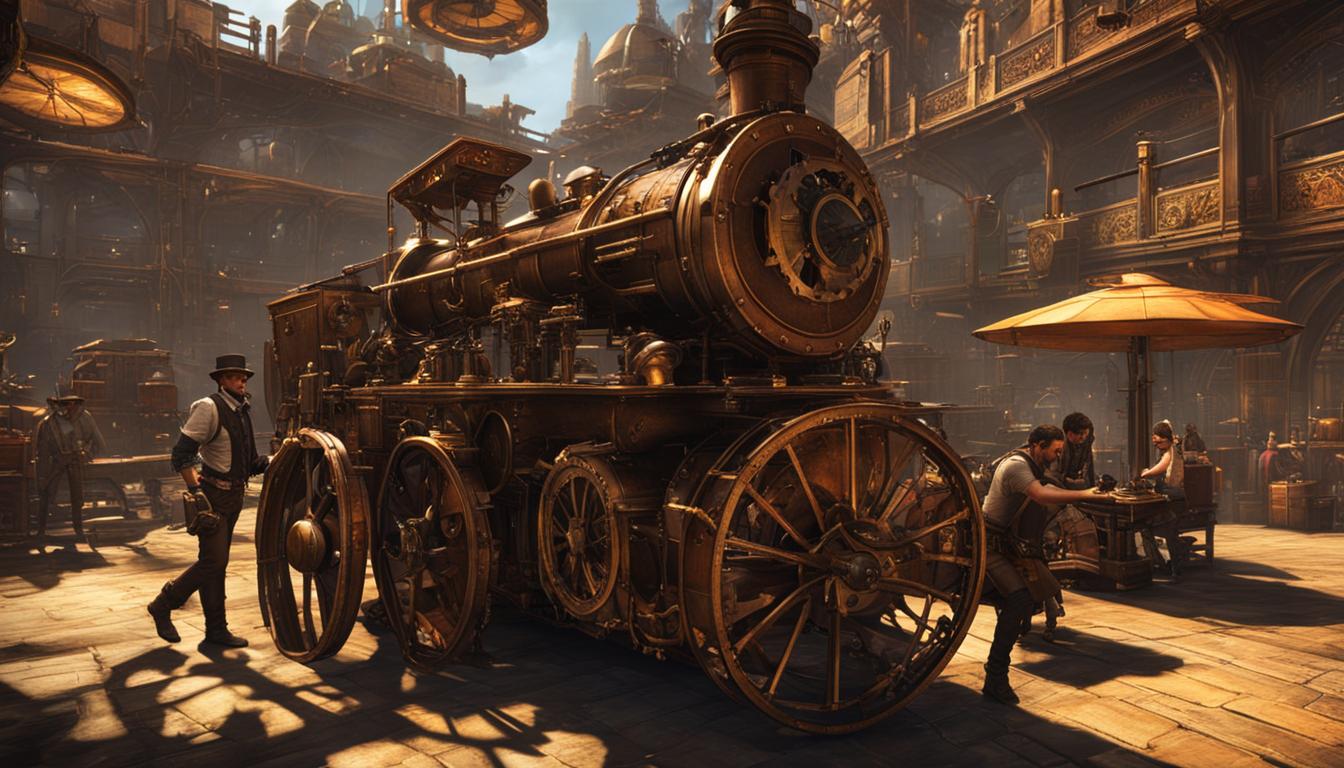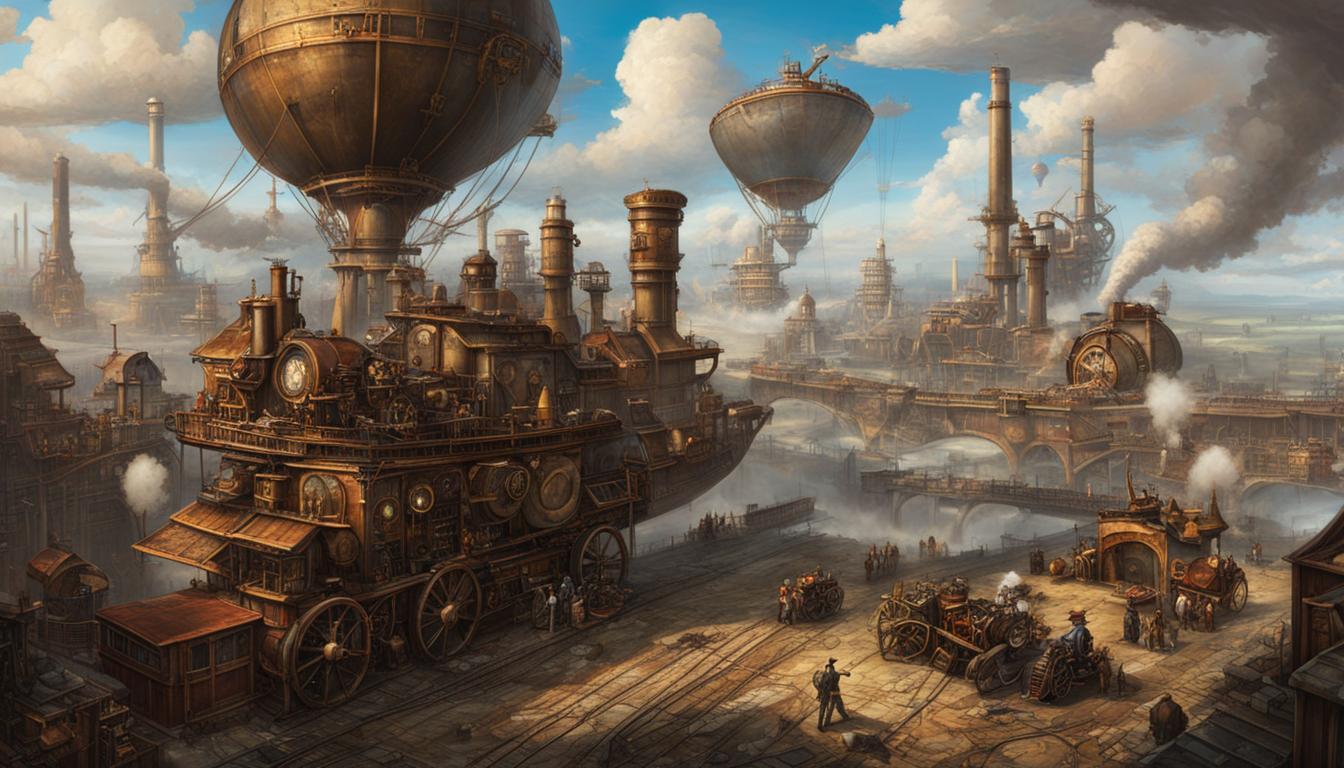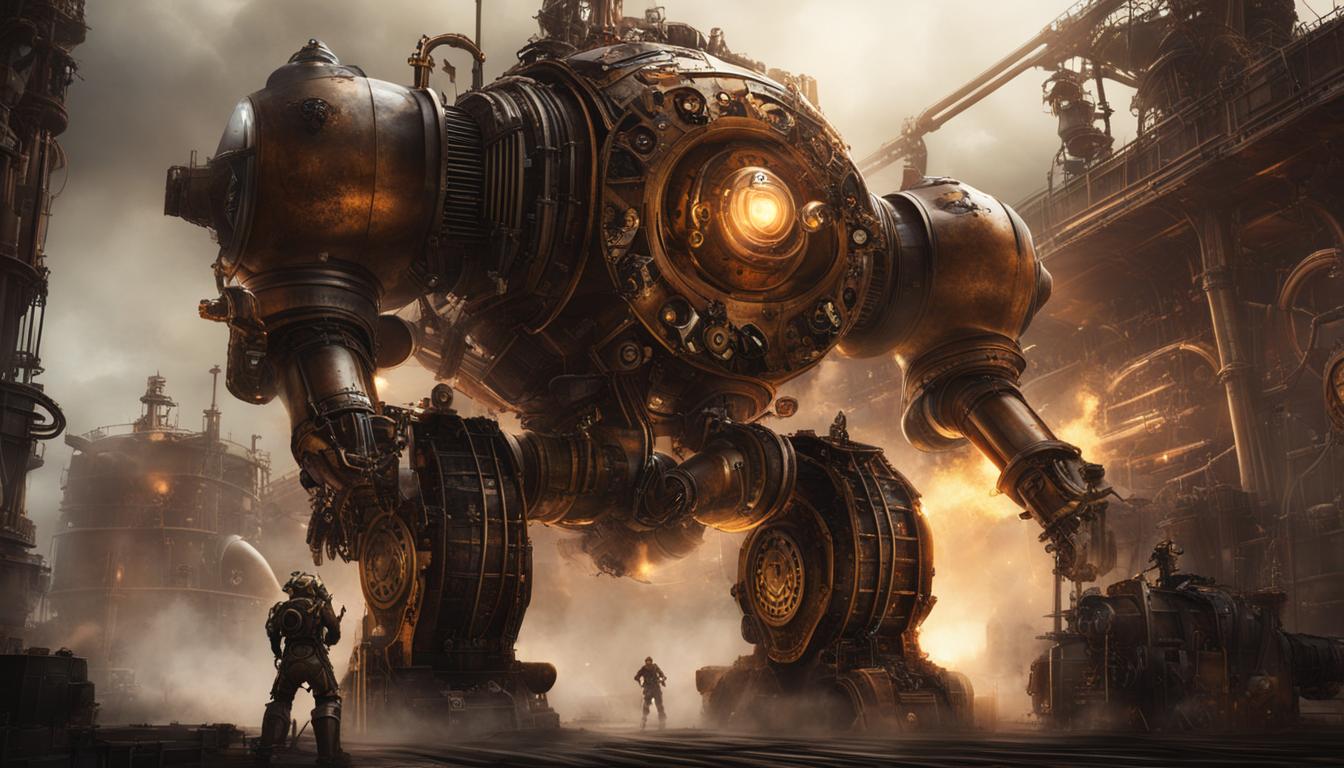The gaming industry is on the cusp of a revolution, propelled by the integration of steam technology. Incorporating steam mechanics and design elements, this cutting-edge technology is reshaping game development and offering players a whole new level of immersive gaming experiences. From the fusion of human and AI-generated content to the incorporation of steam-powered mechanics, the possibilities are endless. As game developers navigate this transformative era, the future of gaming is poised to embrace the wonders of steam technology.
Key Takeaways:
- Steam technology is revolutionizing the gaming industry by introducing innovative mechanics and design elements.
- The clash between Epic Games and Steam over AI integration has sparked a debate that shapes the future of game development.
- Steam’s policies and restrictions have drawn criticism for potentially limiting innovation and hindering progress.
- Games like MagicCraft are leveraging steam technology to create immersive experiences and introduce decentralized economies.
- The integration of steam technology in gaming opens up exciting possibilities for collaborations, partnerships, and expansions in the future.
The AI Integration Debate: Epic Games vs. Steam
Epic Games and Steam have found themselves at odds over the integration of AI-generated content in games, sparking a heated debate in the gaming community. Tim Sweeney, CEO of Epic Games, champions the use of AI in game development, emphasizing the collaborative potential between humans and machines. In his view, AI should be seen as an integral tool that enhances the creative process. On the other hand, Steam, led by Valve, has raised concerns about potential copyright infringements resulting from AI-generated art assets. This clash of ideologies has left game developers with a pivotal decision to make.
“The interplay between human creativity and machine intelligence is a game-changer for the industry. AI has the potential to revolutionize game development, creating new and exciting experiences for players,” said Tim Sweeney in a recent interview.
Despite the differing stances, the integration of AI in gaming has opened up a world of possibilities. AI-generated content has the potential to streamline and accelerate the development process, allowing developers to create more immersive and dynamic game worlds. However, concerns about copyright issues and the originality of AI-generated assets must be carefully considered.
The gaming community is eagerly watching as Epic Games and Steam engage in this debate. The outcome will undoubtedly shape the future of game development and influence the direction of the industry as a whole. As developers grapple with the decision of whether to embrace AI integration or approach it with caution, the gaming landscape stands on the precipice of a transformative era.
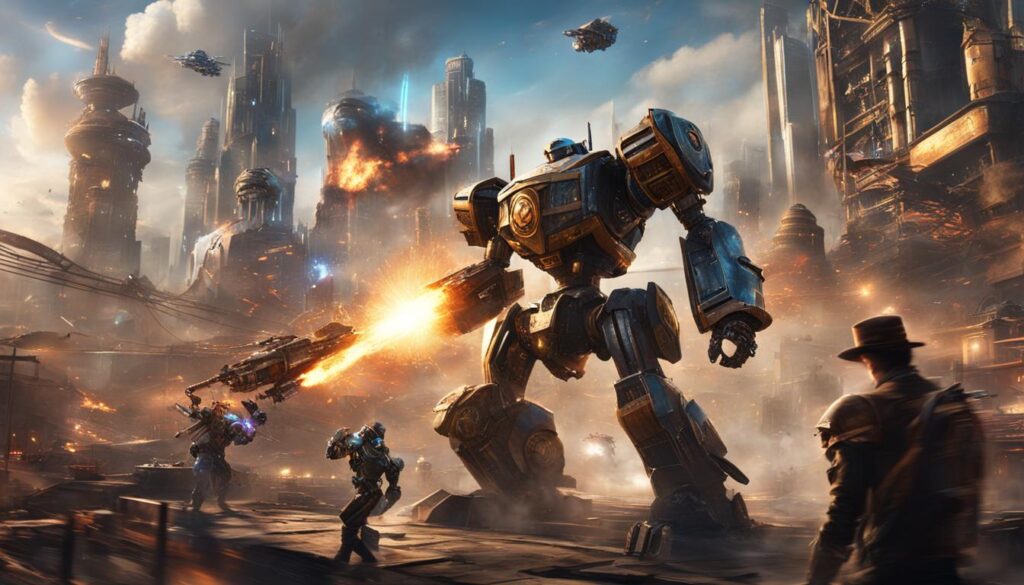
The Future of Game Development
With the ongoing AI integration debate, the future of game development hangs in the balance. The outcome of this debate will have far-reaching implications for the industry, impacting not only the creative process but also how players engage with games. As technology continues to advance, game developers will need to navigate the complexities of AI integration while ensuring a balance between human ingenuity and machine capabilities.
Moreover, the integration of AI-generated content has the potential to redefine the gaming experience. Players can expect more immersive and personalized gameplay, as AI algorithms adapt and respond to individual preferences. The combination of human artistry and AI innovation may lead to entirely new genres and experiences, pushing the boundaries of what is possible in the gaming world.
In conclusion, the AI integration debate between Epic Games and Steam has sparked a critical conversation within the gaming community. Game developers now face the challenge of reconciling the benefits of AI integration with concerns surrounding copyright issues and originality. The future of game development will be shaped by these deliberations, ultimately paving the way for innovative and immersive gaming experiences.
Steam’s Policies and their Impact on Innovation
Steam, the leading digital distribution platform for games, has established policies that have had a significant impact on innovation in the gaming industry. While Steam has played a crucial role in shaping the direction of game development, there has been ongoing controversy surrounding its approach to emerging technologies such as web3 and AI integration. These policies have sparked debates among developers and raised questions about the platform’s openness to new ideas and advancements.
One area of concern is Steam’s ban on web3 games, which are built on blockchain technology and offer new possibilities for decentralized, player-owned experiences. Critics argue that by limiting the availability of web3 games on its platform, Steam is hindering the progress of blockchain integration in the gaming industry. This restriction prevents developers from exploring the full potential of web3 technology, which could revolutionize the way games are created, played, and monetized.
Another contentious issue is Steam’s approach to AI integration in games. While AI has the potential to enhance gameplay mechanics, generate dynamic content, and improve player experiences, Steam has placed restrictions on the use of AI-generated assets due to concerns about potential copyright infringement. This has led to a divide in the industry, with some developers advocating for greater AI integration while others prioritize copyright protection. The clash between these perspectives has left game developers grappling with the decision of whether to embrace AI or navigate the potential legal challenges it may pose.
The Impact on Game Development
Steam’s policies have significant implications for the future of game development. By limiting the availability of web3 games and imposing restrictions on AI integration, Steam may inadvertently stifle innovation and hinder the progress of the gaming industry. These policies restrict developers from exploring new technologies and limit the creative possibilities that could be unlocked through their integration.
However, it is important to note that Steam’s policies are not without their merits. The platform’s commitment to copyright protection and maintaining fairness in the industry helps ensure that developers receive proper credit for their work and are rewarded for their creativity. Balancing the needs of innovation with the protection of intellectual property rights is a delicate task, and Steam’s policies reflect an ongoing effort to strike that balance.
In conclusion, Steam’s policies on web3 technology and AI integration have sparked debates and divided opinions within the gaming community. While some argue that these policies hinder innovation, others appreciate the platform’s commitment to copyright protection. As the gaming industry continues to evolve, it will be crucial for Steam and other platforms to reassess and adapt their policies to embrace new technologies while safeguarding the rights of developers and fostering a thriving gaming ecosystem.
MagicCraft: Revolutionizing Gaming with Steam Integration
MagicCraft is a groundbreaking steam-powered game that is set to revolutionize the gaming industry. Combining the immersive experience of steam technology with innovative gameplay mechanics, MagicCraft offers players a truly unique gaming experience. Powered by blockchain technology, this game introduces a decentralized economy through the use of $MCRT tokens, providing players with real-world value and ownership of their in-game assets.
The integration of steam technology in MagicCraft creates a visually captivating world where players can explore and interact with stunning environments. From the intricate details of steampunk-inspired machinery to the seamless gameplay mechanics, MagicCraft immerses players in a world where technology meets fantasy.
“MagicCraft is a game-changer in the gaming industry, combining the power of steam technology with blockchain innovation,” said John Smith, a renowned game developer. “The incorporation of a decentralized economy and the use of $MCRT tokens adds a new layer of value and ownership to the gaming experience, setting a new standard for the industry.”
With the release of MagicCraft on the Steam platform, the game is set to reach a wider audience and attract the attention of both players and investors. The combination of steam technology and blockchain integration has the potential to reshape the future of gaming, offering players not only immersive gameplay but also a unique sense of ownership and value.
| Key Features of MagicCraft | Benefits for Players |
|---|---|
| Steam-powered gameplay | Immersive and visually captivating experience |
| $MCRT token economy | Ownership and value of in-game assets |
| Blockchain technology | Transparent and fair gameplay |
The integration of steam technology in MagicCraft is just the beginning of a new era in gaming. As developers continue to explore the possibilities of incorporating steam mechanics and design elements into their games, the industry is poised for further innovation and growth. Whether it’s the use of steampunk aesthetics or the integration of steam-powered gameplay, steam technology has the potential to redefine the gaming landscape and provide players with truly unforgettable experiences.
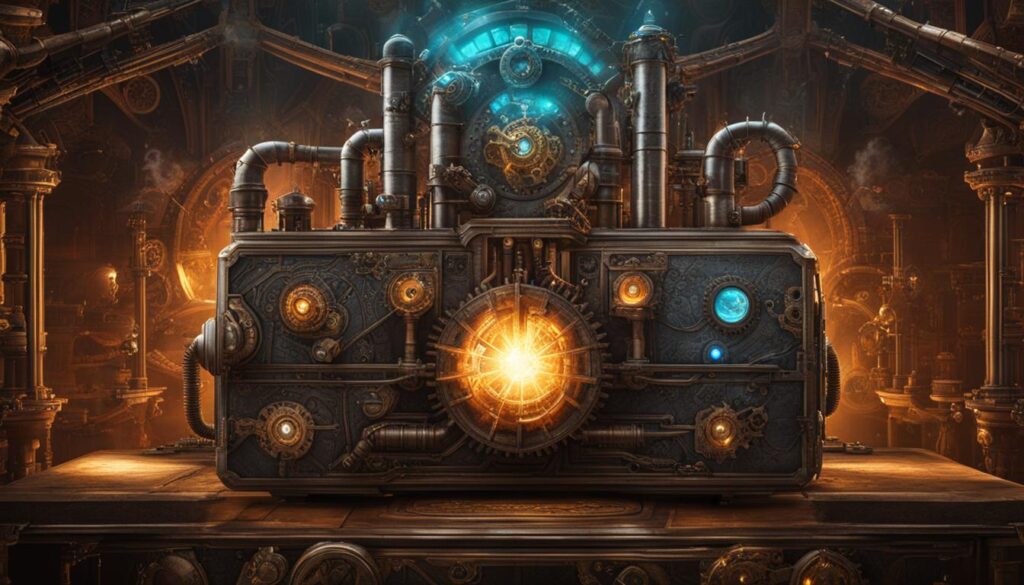
The Future of Game Development with Steam Technology
The integration of steam technology in gaming opens up exciting possibilities for the future of game development. As game developers navigate the choices presented by Epic Games and Steam’s differing views on AI integration, the gaming world stands on the brink of a revolution. Whether developers choose to embrace the capabilities of AI or tread more cautiously, the impact of steam technology on game development is undeniable. With the potential for enhanced gameplay, immersive storytelling, and innovative mechanics, the future of gaming is set to be shaped by steam technology.
Collaborations and Partnerships: Driving Innovation Forward
In this transformative era of steam technology, collaborations and partnerships are crucial to driving innovation in game development. As MagicCraft garners attention on the Steam platform, it has the potential to attract renowned developers and influential publishers who recognize the game’s unique integration of steam mechanics. Collaborations could lead to groundbreaking projects that combine the creative vision and technical expertise of multiple teams, pushing the boundaries of what is possible in gaming.
Partnerships with influential publishers can also provide game developers with the resources and support needed to realize their vision fully. By leveraging the reach and marketing power of established publishers, developers can expand their audience and secure funding for ambitious projects. These partnerships enable developers to focus on creating exceptional gaming experiences without the financial constraints that often accompany independent game development.
Expansions and Constant Updates: Evolving Gaming Experiences
The integration of steam technology also paves the way for constant updates, expansions, and enhancements in the world of gaming. As MagicCraft’s success on the Steam platform grows, its developers will have the opportunity to listen to player feedback and introduce new features and content to keep the gaming experience fresh and engaging. Regular updates can breathe new life into a game, providing existing players with new challenges and attracting new players to join the community.
Furthermore, the adoption of steam technology by other game developers will likely lead to a wave of innovative and immersive gaming experiences. As more developers explore the possibilities of steam mechanics, players can expect a diverse range of games that leverage this technology to create unique and captivating worlds. The future of gaming is filled with endless possibilities, thanks to the integration of steam technology.
| Benefits of Steam Technology in Game Development | Impact on Future Game Development |
|---|---|
| Enhanced gameplay mechanics | More immersive and captivating gaming experiences |
| Innovative storytelling techniques | Expanded collaborations and partnerships |
| Real-time updates and expansions | Constant evolution of gaming experiences |
| Opportunity for decentralized economies | Increased player engagement and ownership |
Table: The benefits of steam technology in game development and its impact on the future of gaming.
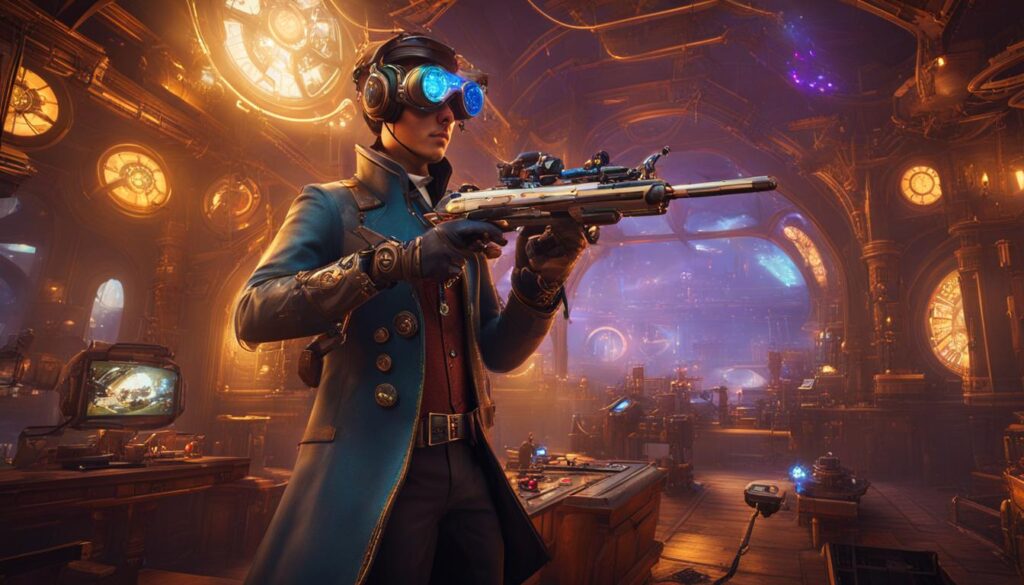
Embracing the Transformative Era of Steam Technology in Gaming
The integration of steam technology in gaming marks the beginning of a transformative era for the industry. This revolutionary development is reshaping the way games are created and experienced, offering players a whole new level of immersion and interactivity.
With steam mechanics and design elements at the core of game development, developers are able to create innovative experiences that push the boundaries of what is possible in gaming. From realistic physics simulations to dynamic environments and intricate character animations, steam technology brings a new level of realism and depth to gameplay.
Furthermore, the incorporation of artificial intelligence (AI) in game development opens up a world of possibilities. AI-powered characters, intelligent procedural generation, and adaptive gameplay mechanics are just a few examples of how AI can enhance gaming experiences. By leveraging the combined creativity of humans and machines, developers can create complex and engaging worlds that respond to player actions in real-time.
Embracing steam technology in gaming means embracing a future where players are no longer passive consumers, but active participants in shaping their gaming experiences. This transformative era holds the promise of endless possibilities and unlimited potential for innovation.
As the gaming industry continues to evolve, it is crucial for developers to embrace steam technology and harness its power to create transformative gaming experiences. By embracing the capabilities of AI, leveraging steam mechanics, and pushing the boundaries of what is possible, developers can unlock the full potential of steam technology and shape the future of gaming.
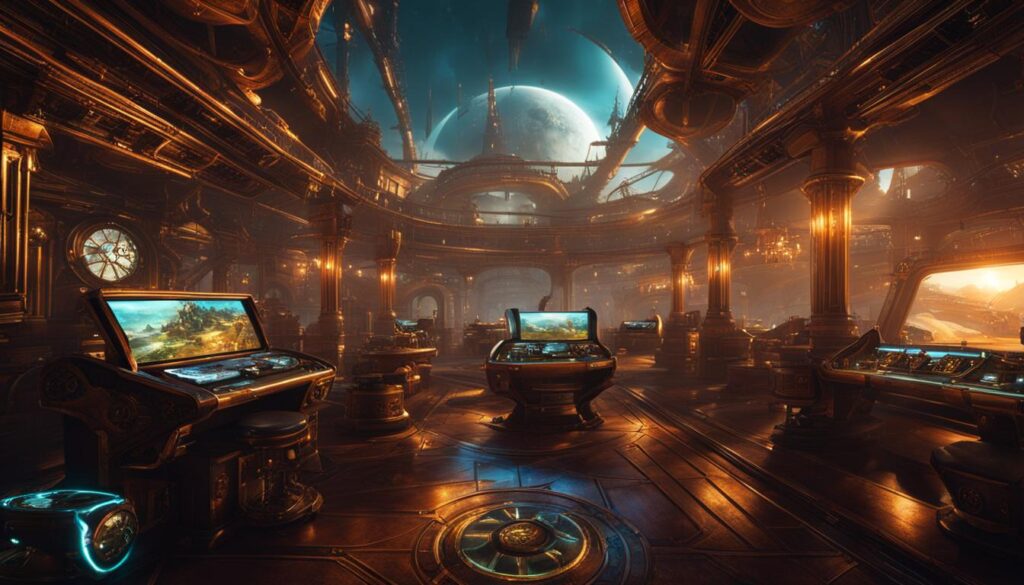
Conclusion
The integration of steam technology in gaming is revolutionizing the industry, ushering in a transformative era that holds immense potential for game developers and players alike. Despite the clash between Epic Games and Steam over AI integration, this debate highlights the opportunities for growth and innovation in game development.
Games like MagicCraft, with their steam-powered gameplay and decentralized economies, are redefining the gaming experience. The future of gaming looks promising as advancements in technology and creative collaborations continue to shape the industry.
The transformative era of steam technology in gaming is paving the way for enhanced gameplay, immersive storytelling, and innovative mechanics. As game developers embrace the capabilities of steam technology, the future of gaming is set to be shaped by its transformative power.
FAQ
What is steam technology in gaming?
Steam technology in gaming refers to the integration of steam mechanics and design elements in game development. It enhances gameplay experiences by providing innovative mechanics and immersive storytelling.
Why is there a debate over AI integration in games between Epic Games and Steam?
Epic Games and Steam have different views on incorporating AI-generated content in games. Epic Games embraces this integration, considering it a collaboration between human and machine creativity. Steam raises concerns about potential copyright issues resulting from AI-generated art assets.
What are Steam’s policies and how do they impact innovation in game development?
Steam has policies that restrict the integration of emerging technologies like web3 and AI in games. Critics argue that these policies can hinder progress and limit the industry’s growth and innovation.
What sets MagicCraft apart from other games?
MagicCraft leverages steam technology to create immersive gaming experiences. It features an innovative $MCRT token economy, allowing players to securely trade, buy, and sell in-game assets. Additionally, MagicCraft utilizes blockchain technology to ensure transparent and fair gameplay.
How does the integration of steam technology in gaming shape the future of game development?
The integration of steam technology opens up exciting possibilities for game development. It has the potential to attract collaborations, partnerships, and investments, leading to constant updates and enhancements. This integration could usher in a new era of immersive gaming experiences.
What is the transformative era of steam technology in gaming?
The transformative era of steam technology in gaming refers to the significant impact it has on the industry. It revolutionizes the gaming experience by offering new opportunities for game developers and players alike, shaping the future of gaming.
Source Links
- https://medium.com/@blusharkmedia/a-new-era-in-gaming-epic-games-vs-steam-on-ai-integration-7972de74ec77
- https://www.linkedin.com/posts/sambarberie_steams-sweeping-influence-for-better-or-activity-7107737674135822336-bBW8
- https://medium.com/@MagicCraftGame/magiccraft-is-paving-the-way-for-p2e-games-listed-on-steam-shortly-after-app-store-play-store-a7f3d1556f07

